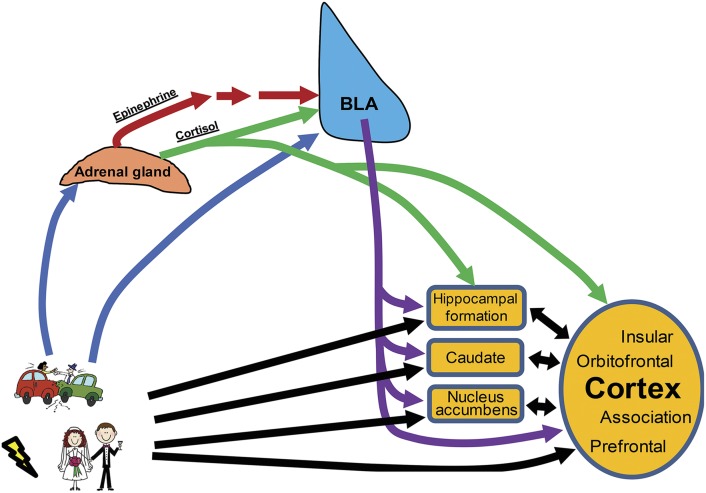Fig. 2.
Schematic diagram illustrating how emotionally arousing events lead to enhanced memory consolidation. Events, regardless of their degree of emotional arousal, produce information (black arrows) that is processed in a number of different memory-related brain regions, depending on the type of learning, including the hippocampal formation, the caudate, the nucleus accumbens, and various cortical regions. However, emotional arousal also activates systems that influence how those memories are processed, specifically leading to enhanced memory consolidation compared with memories for emotionally neutral or mundane events. Such events, as shown in the lower-left corner, activate peripheral stress hormone systems, leading to a release of epinephrine and cortisol. Via indirect and direct routes, respectively, these hormones lead to activation of the BLA. In addition, emotionally arousing events may also activate the BLA through other means. The BLA, in turn, maintains widespread projections throughout the forebrain and, through these projections (purple arrows), modulates the memory processing in these other regions, enhancing the consolidation of such memories. In addition, as cortisol can cross the blood-brain barrier, it also directly influences memory consolidation in these other regions, although in a manner dependent on BLA activity.

